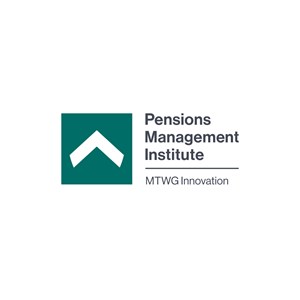
This fact is undeniable: with the current trajectory of exponential growth, Master Trusts will be one of the dominant forms of pension provision within the next five years. It is safe to say that the Master Trust market in 2025 will not resemble its current state. There will be fewer players with bigger clout. As these Master Trusts are rapidly gaining scale, so their approach to investments is becoming more sophisticated. So what will the near future look like?
Private markets
Private markets, in the shape of private equity, private debt and real assets such as infrastructure and property, will form a larger part of a Master Trust’s investment strategy. Their increased scale will allow them to manage the complexity, illiquidity and cost of investing in private markets.
This is against a backdrop of private markets already representing more than 10% of the overall investable universe, and this proportion continues to increase. There is a well-documented shift in capital formation away from public and towards private markets: for example, new companies are staying private for longer and are delaying IPOs or not even planning one at all, while existing listed companies are becoming delisted. As a result, more and more value is being harvested by private market investors as listed markets are becoming dominated by older, more mature businesses with lower growth prospects. Traditionally, UK DC schemes have invested in listed markets so we are now witnessing a situation whereby DC savers need as much return as they can get to bridge the retirement savings gap, but they currently miss out on the high growth opportunities provided by private markets.
This is beginning to change and in the next five years a growing number of Master Trusts will allocate to illiquid investments in their default strategies. This trend will be supported by their growing AUM which makes private investments more accessible and gives them leverage when it comes to fees; by the growing expertise of Master Trusts’ in-house teams; by relatively bleaker prospects of public markets and last but not least, by the growing push from the government in this area. We would also like to think that there will be competitive pressure and that we get to an Australian model where it is a hygiene factor – if a Master Trust doesn’t have around 20% in alternatives, they will stand out (and not in a good way!). We are realistic about this and five years will not be enough to get all Master Trusts to this position but we are already seeing increasing allocations and expect some Master Trusts to be at this level or higher.
Responsible investment
What we can say with strong certainty is that Environmental, Social and Governance (ESG) factors will be fully incorporated into how Master Trusts think about investing and how they work with external managers. We believe all Master Trusts will need to have a very strong ESG approach or they will not stand up to the scrutiny of regulators, customers, evaluators and the press. We predict that the minimum acceptable level, that still allows for safeguarding the value of members’ investments, will be a responsible investment approach and strong stewardship. Already we can see that some will go further into sustainable investing where returns combined with positive societal impacts are explicitly sought after. We may even see this becoming a differentiator and more niche Master Trusts emerging – a fully ethical one, for example. As individuals are increasingly taking more interest in how their pensions are invested, we expect there to be a lot more pressure on Master Trusts to deliver to their members’ needs. Who knows, in five years we may see a plethora of ‘green’ default strategies and ‘doing good’ investment options from which members can select.
Stewardship will come more and more into the spotlight. The current approach where some fund managers cast votes without direct reference to the wishes of investors in their funds may become increasingly problematic. This won’t be easy to solve as Master Trusts, like the UK DC market as a whole, invest mainly via pooled funds, but we expect that at least some Master Trusts will require votes to be cast as they fit.
Personalisation
The dogma of financial advice is that it works at its best when it is fully tailored to a person’s circumstances, wishes and needs. By that measure, Master Trust defaults are at the other end of the spectrum. While single employer schemes attempt to analyse their membership to be able to bespoke their investment strategies to a degree, when it comes to Master Trusts with millions of members, this approach is not feasible. With technological advances making their way into pensions, we believe we are not far from being able to offer individuals a much better degree of tailoring of defaults. Cohort based defaults could group members into sections based on shared characteristics using the data that is already easily accessible to Master Trusts.
Towards the end of the next five years, we will very likely go further. ‘Open finance’ will give Master Trust savers a single view of all their finances in one place, enabling them to make better decisions. Behind the scenes, however, this information could be used to design an investment pathway that is most suitable for each particular saver taking into account their full financial balance sheet and personal circumstances, which potentially will take away the need of having a default at a Master Trust level. Will this be one of the first areas where we will see artificial intelligence replacing investment consultants?
Transparency
Transparency is a crucial foundation of trust in the pensions industry and we, as an industry, have not covered ourselves in glory in the past. We may be overcompensating now by putting exorbitant demands on trustees and Investment Governance Committees with pages and pages of DC disclosures, requiring them to publish information that is of minimal use to members or employers. We hope that things will look different in five years’ time and that we will instead concentrate on transparency where it leads to real insights and supports decision making.
Moving forward, in the next five years, we hope Master Trusts are better equipped to provide members with information that can empower them to take ownership of their pension savings, as part of their wider financial wellness.
Whilst the overall goal for members is to know what outcome they can expect, with day-to-day transparency members want to know three simple things: how is my pension performing? What am I investing in? How much am I paying for it? We are getting better on the third but we still have work to do on the first two.
As pension investors are becoming more socially conscious and are beginning to realise that their pension pots are actually invested in financial markets, we hope the Master Trusts are better placed to tackle the transparency of how assets are invested. Linked to the ESG theme, we expect Master Trusts to start showing their members the companies they hold, the carbon emissions that their portfolios are responsible for, the voting that is happening on their behalf and so on. The more forward thinking Master Trusts will be developing these capabilities already.
Albeit the Master Trust market is now underpinned by an authorisation regime, there are still difficulties in obtaining performance data of their default strategies. There are notable efforts in the industry to extract that performance and publish it openly. Given workforces in the UK are becoming increasingly transient, it is likely members will be invested in more than one Master Trust. As such in five years’ time, we expect members will have the ability to see the performance of their investments in a way that they can readily understand and compare, league tables (as those produced by some independent industry participants today) are likely to become increasingly popular.
We would even suggest that we go further. While it is very important to look at past results, when it comes to choosing a Master Trust past performance could only be partly indicative of the future. Moreover, returns data is a lot more meaningful when taken together with risk, and looking at both on a forward-looking basis could be a simple yet powerful way to understand exactly what you’re buying. If we introduce a modelling template that includes standardised member characteristics and financial assumptions, we could finally overcome the difficulty of comparing apples with oranges that we are often faced within the Master Trust market. This benchmarking would be more meaningful as it would be based on outcomes that savers can expect, clearly showing the dispersion of risk to these outcomes. We hope to see this kind of benchmarking done very soon.
Post-retirement Within the next few months we will see ‘retirement pathways’ going live across a variety of platforms. This is a good first step in ensuring better outcomes for people post retirement. However, a lot more work needs to be done to meaningfully support those who will not be able to benefit from the luxury of personal financial advice.
The industry should come together with the government and regulators to ensure we offer these savers a post-retirement default strategy that works with minimal or even no intervention on their part. After all, one of the best parts of being in a DB scheme was that you didn’t have to engage with it at all before or after retiring. Things just “magically” happened and your pension got paid into your bank account.
Surely, we should be able to do this for DC savers who do not want the choice and do not know what to do with the choice, but just want to get the best they can. Whilst this is an area where innovation has been slow to date, in five years we expect all of the Master Trusts to have drawdown solutions that aim to provide fluidity between pre- and post-retirement.
As we are becoming a DC nation, the industry’s innovation efforts will need to move faster, be implemented for the mass market on a bigger scale and focus on areas where improvements can be meaningful. Investment is one such area where even small improvements could markedly impact people’s lives by giving them more money or more tailored answers to their needs.
Notes/Sources
This article was featured in Pensions Aspects magazine September edition.
Last update: 23 April 2021
You may also like:






